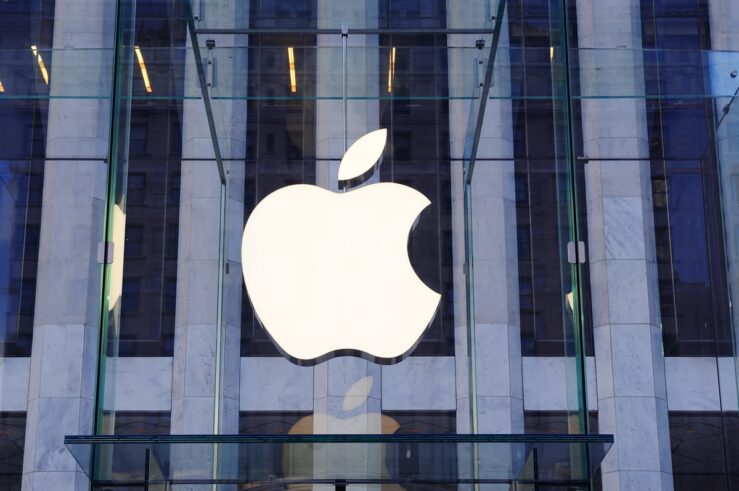This article is a part of the Free to Choose Symposium symposium.
Mandatory disclosure is a—maybe the—defining characteristic of U.S. securities regulation. Issuers selling securities in a public offering must file a registration statement with the SEC containing detailed disclosures, and thereafter comply with the periodic disclosure regime. Although the New Deal-era Congresses that adopted the securities laws thought mandated disclosure was an essential element of securities reform, the mandatory disclosure regime has proven highly controversial among legal academics—especially among law and economics-minded scholars. Some scholars argue market forces will produce optimal levels of disclosure in a regime of voluntary disclosure, while others argue that various market failures necessitate mandatory disclosure.
Both sides in this longstanding debate assume that market actors rationally pursue wealth maximization goals. In contrast, my work in this area draws on the emergent behavioral economics literature to ask whether systematic departures from rationality might result in a capital market failure necessitating government regulation. I conclude that behavioral economics is a very useful tool, but that it in this instance it cannot fairly be used to justify the system of mandatory disclosure.
As with any model claiming predictive power, law and economics rests on a theory of human behavior. Specifically, neoclassical economics is premised on rational choice theory, which posits decisionmakers who are autonomous individuals who make rational choices that maximize their satisfactions. Critics of the law and economics school have long complained that rational choice is, at best, an incomplete account of human behavior.
The traditional law and economics response is that rationality is simply an abstraction developed as a useful model of predicting the behavior of large numbers of people and, as such, does not purport to describe real people embedded in a real social order. A theory is properly judged by its predictive power with respect to the phenomena it purports to explain, not by whether it is a valid description of an objective reality. Indeed, important and significant hypotheses often have assumptions that are wildly inaccurate descriptive representations of reality. Accordingly, the relevant question to ask about the assumptions of a theory is not whether they are descriptively realistic, for they never are, but whether they are sufficiently good approximations for the purpose in hand. Until quite recently, empirical research tended to confirm that the rational choice model of human behavior is a good first approximation of how large numbers of people are likely to behave in exchange transactions.
Over the last 10-15 years, however, a new school of economic analysis has emerged that challenges the rational choice model precisely on its predictive power. Empirical and laboratory work by cognitive psychologists and experimental economists has identified a growing number of anomalies in which behavior appears to systematically depart from that predicted by rational choice. (For a good introduction to this literature, which is readily accessible to the lay reader, see The Winner’s Curse by Richard Thaler.)
Two of the more important examples of these decisionmaking biases are:
- Herd behavior: Why do lemmings leap off that cliff in Norway? What explains fads like Beanie Babies and Pokémon? Herd behavior occurs when a decisionmaker imitates the actions of others, while ignoring his own information and judgment with regard to the merits of the underlying decision.
- The status quo bias: All else being equal, decisionmakers favor maintaining the status quo rather than switching to some alternative state. The status quo bias can lead to market failure where decisionmakers’ preference for the status quo perpetuates suboptimal practices.
The extent to which behavioral economics calls into question more traditional modes of economic analysis remains sharply contested. At the very least, however, it seems clear that attention must be paid to the possibility that behavioral analysis sheds light on policy issues.
To decide whether behavioral economics tells us anything about mandatory disclosure, let’s conduct a thought experiment: Suppose we lived in a world in which the government did not mandate disclosure; instead, issuers can decide between voluntarily providing disclosure or following the rule of caveat emptor. Standard economic analysis predicts that issuers will voluntarily provide optimal levels of disclosure. Because investors value disclosure, and are willing to pay more for the securities of firms that provide such disclosure, issuers who provide it benefit from a lower cost of capital.
In contrast, a behavioral economics-based approach asks whether well-established behavioral phenomena might cause suboptimal disclosure practices to prove more “sticky” than conventional rational choice theory predicts.
In the interests of brevity, I focus here on only one of several candidate phenomena; namely, the status quo bias. (For more elaborate discussion, see my Mandatory Disclosure: A Behavioral Analysis.) The existence of such a bias is well-documented in the experimental economic and psychological literature. Many empirical demonstrations of this decisionmaking bias have focused on the so-called endowment effect. Subjects commonly place a higher monetary value on items they own than on those that they do not own, even if the two items have the same market value. Accordingly, subjects must be paid more to give up something than they would be willing to pay to acquire the same object.
Tests of the endowment effect demonstrate that the status quo bias is somewhat sticky. In the classic coffee mug experiment, subjects participated in several trading rounds, an experimental design intended to permit learning to take place over successive trials. The substantial difference between mug holders’ willingness to accept price and cash holders’ willingness to pay price nevertheless persisted. In my thought experiment, it thus seems plausible that a status quo of suboptimal disclosure might likewise prove persistent (sticky).
Various explanations have been proffered for the status quo bias, the most commonly accepted of which is loss aversion. People evaluate the utility of a decision by comparison to some neutral reference point. Changes framed in a way that makes things worse (losses) loom larger in the decisionmaking process than changes framed as making things better (gains)—even if the expected value of the two decisions is the same. Hence, a loss averse person (as are most people) is more perturbed by the prospect of losing $100 than pleased by that of gaining $100. A bias towards the status quo is a natural result of loss aversion, because decisionmakers give the disadvantages of change greater weight than any potential advantages.
If loss aversion is the principal explanation for the status quo bias, however, that bias assumes less importance in my thought experiment than might otherwise be the case. First, the decision to disclose or not disclose firm financial information to investors is a rather different one than the decision to give up a tangible asset with which one has been endowed. What loss is suffered by a corporate manager who decides to buck the nondisclosure status quo? Losses resulting from a shift to expansive disclosure will be felt, at least in the first instance, by the firm and not the managers who decided to disclose.
Second, if loss aversion were endemic, capital markets could not exist. Loss aversion primarily affects owners of goods bought for consumption rather than investment. In an investment transaction, such as the disclosure and investment decisions at issue in our thought experiment, the seller does not experience a loss when trading. Similarly, buyers do not perceive the money spent on such purchases as a loss. Accordingly, the status quo bias should not prevent firms from shifting from a status quo of nondisclosure to a new regime that provides optimal levels of disclosure.
Finally, loss aversion does not imply that decisionmakers will never accept the risk of losses, but only that they will demand a premium for bearing that risk. The status quo bias likely has effects only at the margin. Hence, if investors value disclosure but managers’ loss aversion perpetuates a nondisclosure status quo, investors should be able to overcome managerial inertia by paying a premium for securities of corporations that provide optimal disclosure. As such, the status quo bias is not inconsistent with the standard economic model’s claim that a regime of voluntary disclosure will lead to full disclosure. At most, the status quo bias simply implies that the premium investors must pay for disclosure will be higher than the rational choice-based model predicts. In other words, if there is a market failure here, it is a relatively low magnitude one. In turn, this implies the need for (at most) a very limited form of legal intervention designed to shift the status quo from one of nondisclosure to disclosure. Once the status quo has shifted, the premium will disappear, and the new disclosure-oriented status quo would become self-perpetuating. At that point, which may describe the current U.S. situation, the justification for continued legal intervention would dissipate.
There appears to be little evidence that the status quo bias is a serious problem in U.S. capital markets. To the contrary, the experimental evidence arguably implies that the endowment effect does not result in capital market failure. Recall that the endowment effect is well-documented in the laboratory experiments involving students trading coffee mugs. Instructively for the capital market, however, the endowment effect appears to vanish when people do not physically possess the commodity in question. Subjects trading tokens or vouchers demonstrate only a weak endowment effect. Because securities transactions more closely resemble the token or vouchers context then experiments involving physical possession of a tangible commodity, these results call into question the extent to which the status quo bias results in capital market failure.
Let’s assume that I’m wrong, however (it’s been known to happen). Assume arguendo that capital markets fail to produce optimal disclosure through voluntary corporate action. The mere existence of such a market failure does not—standing alone—justify legal intervention. In addition to the standard prudential arguments in favor of limited government, which counsel caution in concluding that a purported market failure requires government correction, behavioral economics itself argues against presuming the desirability of intervention. As Jennifer Arlen has explained (in The Future of Behavioral Economic Analysis of Law, 51 Vand. L. Rev. 1765 (1998)):
Proposals designed to address biases generally entail the intervention of judges, legislators, or bureaucrats who are [themselves] subject to various biases. The very power of the behavioralist critique—that even educated people exhibit certain biases—thus undercuts efforts to redress such biases. In addition, the decisions of government actors also may be adversely influenced by political concerns—specifically interest group politics. Thus interventions to “cure” bias-induced inefficiency may ultimately produce outcomes that are worse than the problem itself.[1]
In other words, the claim that law can correct market failures caused by decision-making biases or cognitive errors treats regulators as exogenous to the system. Once the state is endogenized, however, regulators must be treated as actors with their own systematic decision-making biases. It thus becomes evident that behavioral economics loops back on itself as a justification for legal intervention.
In sum, my work suggests three (complementary, rather than competing) potential answers to behavioral economics-based market failure claims. First, there will be a strong temptation to use behavioral economics too glibly. Advocates of government intervention will be tempted to jump from positing the status quo bias, citing the coffee mug experiments, to an assertion that the government needs to shake up the status quo, without demonstrating that the bias is truly valid in the specific setting at hand. Second, a certain degree of skepticism about the power of law to effect social change seems warranted. Indeed, behavioral economics itself offers additional reasons to doubt the capacity of law as agent for social change. Finally, one cannot justify government intervention without asking whether the case for it survives endogenizing the state.
[1] Arlen, supra note 58, at 1769.




